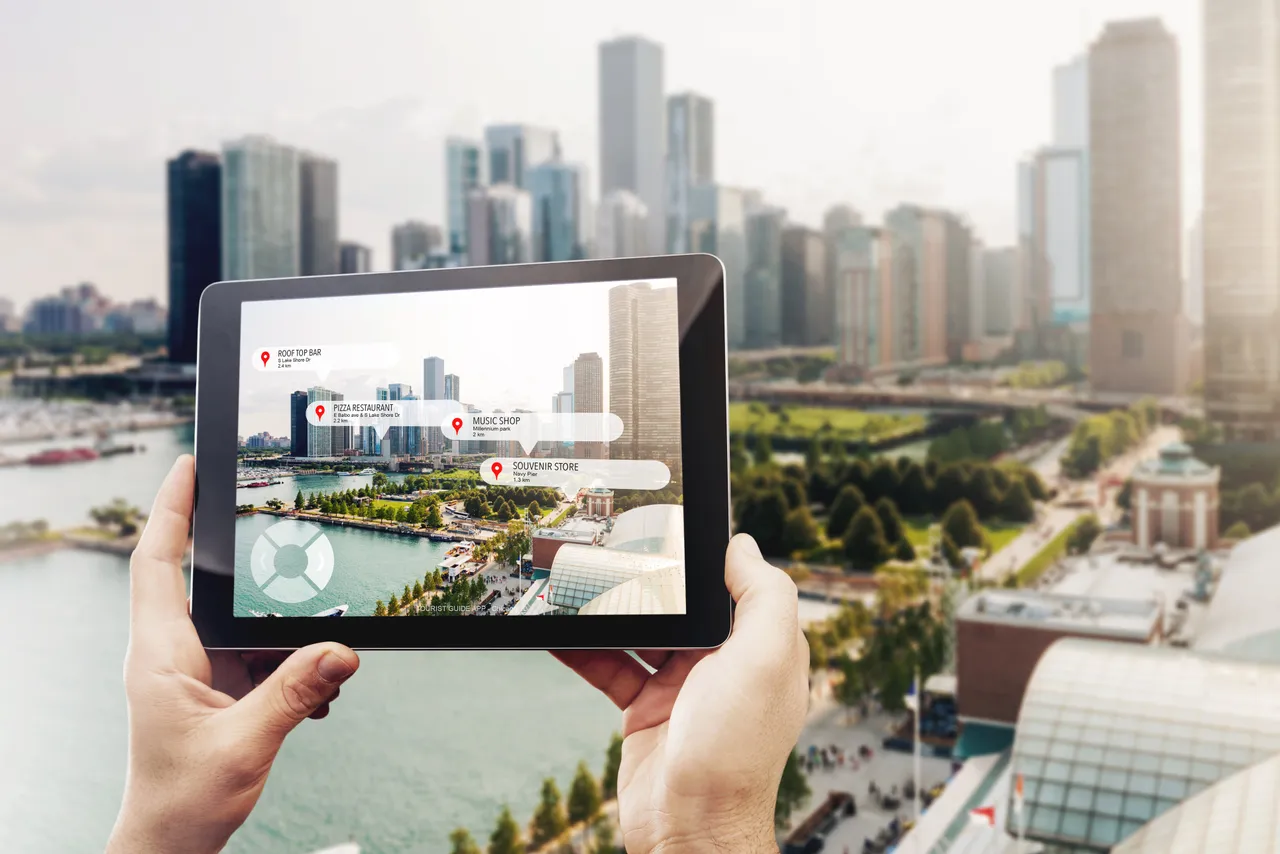
Augmented reality (AR) is a technology that superimposes digital information and images onto the real world, creating a hybrid reality. It enhances the physical world by adding virtual objects, sounds, or other sensory inputs that can be seen, heard, or even felt. Unlike virtual reality, which immerses users in a completely digital environment, AR blends the digital and physical worlds to create a more interactive and immersive experience.
AR technology uses a device's camera, software, and sensors to create a seamless integration of digital content with the real world. For example, a smartphone or tablet's camera can be used to display digital information, such as text or images, on top of real-world objects. AR can also use facial recognition, object recognition, and other advanced technologies to create a more personalized and interactive experience.
AR has numerous applications across various industries, including:
- Gaming: AR games superimpose virtual objects and characters onto the real world, creating an immersive gaming experience. Popular AR games include Pokémon Go and Harry Potter: Wizards Unite.
- Education: AR can enhance the learning experience by providing interactive, 3D visual aids that make complex concepts easier to understand.
- Retail: AR can be used in e-commerce to enable customers to try on virtual clothes, see product demos, and visualize how furniture would look in their home.
- Healthcare: AR can be used for training medical professionals, visualizing patient data, and providing real-time guidance during surgical procedures.
- Navigation and tourism: AR can provide turn-by-turn directions, display location-specific information, and offer guided tours of cities and landmarks.
- Architecture and design: AR can help architects and designers visualize and present their designs, and enable clients to see how different design elements would look in a physical space.
- Military and defense: AR can be used for military training, tactical operations, and maintenance and repair procedures.
As AR technology continues to advance, it has the potential to transform the way we interact with the world around us, enhancing our experiences, improving our understanding, and increasing our productivity.
Augmented reality (AR) blends the real world with computer-generated elements, overlaying virtual information onto your real-time view. Imagine seeing dinosaurs roaming your living room, detailed instructions popping up above a car engine, or trying on clothes virtually before stepping into a store.
Here's how it works:
1. Real-world capture: AR systems, like smartphones or special glasses, use cameras and sensors to capture the surrounding environment.
2. Digital content creation: developers create 3D models, graphics, and other virtual elements that correspond to the real-world scene.
3. Precise positioning: Sophisticated algorithms analyze the captured data and precisely position the virtual elements onto the real world scene in real-time, creating a seamless blend.
4. User interaction: You can interact with the virtual elements through various means, like touch, gestures, or voice commands, enhancing the immersive experience.
Companies Developing Augmented Reality
Here are some key companies developing augmented reality (AR) across various categories, without images:
Tech Giants:
- Meta (formerly Facebook): Spark AR Platform empowers developers, Project Cambria headset promises high-resolution visuals and advanced eye tracking.
- Apple: ARKit framework for iPhones and iPads, rumored Apple Glasses for deeper immersion.
- Microsoft: HoloLens 2 mixed reality headset for enterprise applications in engineering, healthcare, and training.
- Google: ARCore framework for Android devices, Project Iris headset in development.
Gaming and Entertainment:
- Niantic: Pioneered location-based AR gaming with Pokemon Go, Lightship Platform for a shared AR world.
- Magic Leap: Magic Leap One headset with advanced light field technology for realistic AR visuals, primarily targeting enterprise and creative applications.
- Valve: Lighthouse software for room-scale AR experiences in controlled environments.
Emerging Players:
- Snap: Lens Studio for custom AR filters and lenses in Snapchat.
- Spectral: Spectacles glasses with a sleek design for everyday use.
- Looking Glass Factory: Holographic displays for immersive AR experiences in public spaces or retail environments.
Others to Watch:
- Qualcomm, Intel, HTC Vive, NVIDIA, Ximmerse, YostAR, Banuba, Niantic's Lightship partners like Niantic, Pikwik, Pixiv, 6sense.
